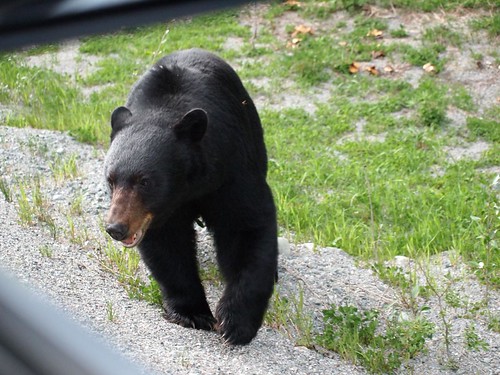
This black bear near Whistler Village was a mere 3 metres away from me
One of the things I’ve gone gaga over during my recent trip to the Canadian Rockies was photography. Wielding a new Olympus PEN EPL1 camera, I’ve taken tonnes of amateurish photos and videos of every imaginable living or unliving thing.
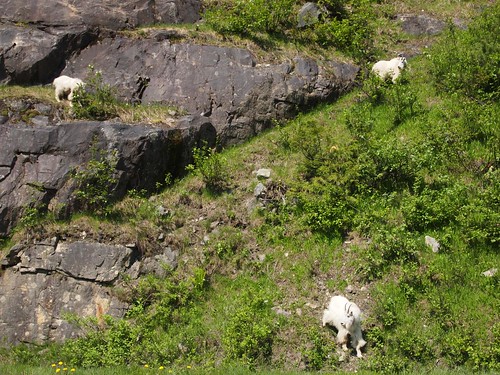 >
>
These mountain goats grazing near the road were a rare sight
The hardest subjects to take were the wild beasts that we occasionally encounter during our long drives through Banff. Getting a good shot can be hard work, especially since most animals – including ‘fearsome’ grizzly bears – are deathly afraid of us. To them, a car resemble a huge metallic death dealing monster (which isn’t far from the truth).
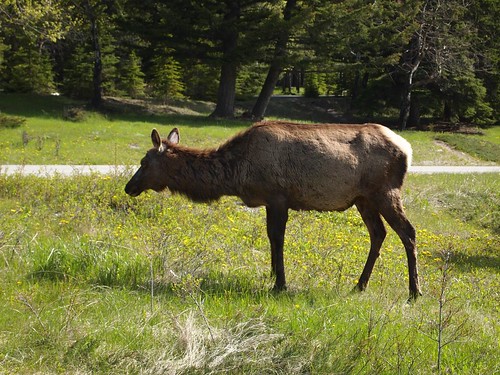
Even a big elk like this is scared of us if we approach too close
Here are some lessons I’ve learnt which may be useful for life and work in general.
1) Find the right time to maximise your chances. While this can sometimes be an experiment in luck and chance, the likelihood of photographying animals are usually better in the early mornings or late evenings. Similarly, one should always time oneself correctly in order to succeed in other ventures. Find the best season to launch your book, or the most appropriate hour to speak to your boss about a difficult issue.
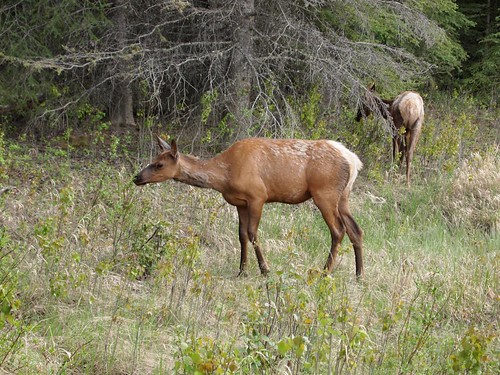
These young elks were spotted in the evening as we were driving back to Jasper
2) Choose the right place for the deed. One of the tricks in photographing black bears (which are territorial) is to repeatedly return to a particular location once an animal is spotted. Likewise, it may be fruitful to go back to where your customers normally hang out time and again to observe their behaviours, or to find the best restaurant to talk to a client.
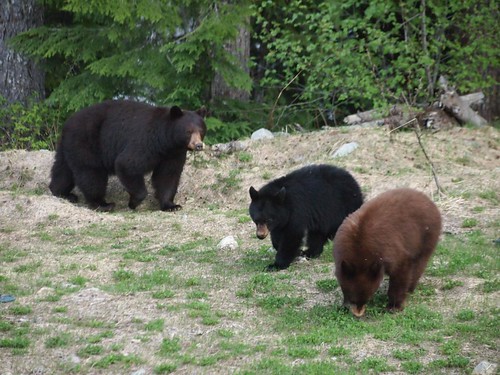
We wouldn’t get this lovely photo of a mother bear with two cubs if we didn’t go to where they normally hang out
3) Be patient and persistent. Spotting cute furry bears or awe inspiring mooses require an uncanny combination of being at the right time and right place when the stars (Ursa Major?) are aligned. You got to keep returning, drive back and forth, find the right time, and wait for the animal to turn its head towards you. In a similar vein, repeatedly courting (not irritating) a big client or completing a mind boggling essay require dogged persistence and patience.

A moose in nature’s bush is worth dozens in the zoo
4) Follow the crowd and see where they go. The best way to get good wildlife photos is to literally follow like-minded others. Queues of vehicles along the roads in Banff and Jasper are usually good indicators. In a similar fashion, getting a great meal often involves choosing a crowded rather than empty restaurant. Likewise, if you want to get a higher “hit rate” for your website, participate in community portals that are filled with kindred spirits.
We managed to get this shaky video (ended by a ranger’s flare gun) of a shy grizzly bear by driving near where it was spotted and following a huge ‘bear jam’
5) Don’t scare them away. Yes, the same principle applies for both animals and humans. Being persistent doesn’t mean approaching one’s photographic/business/social prospect in a brash manner. Often, taking slow and tentative steps to ‘test water’ may work better than hurriedly moving forward. I’ve certainly learnt that lesson when I missed a majestic shot of an elk standing grandly on a curb.
6) When opportunity strikes, be 120% ready. As you may have guessed, amateur wildlife photography requires a lot of luck. Occasionally, you do encounter one of these rare moments and when it happens, you need to react very quickly. I suppose this lesson is universal at work or at play.
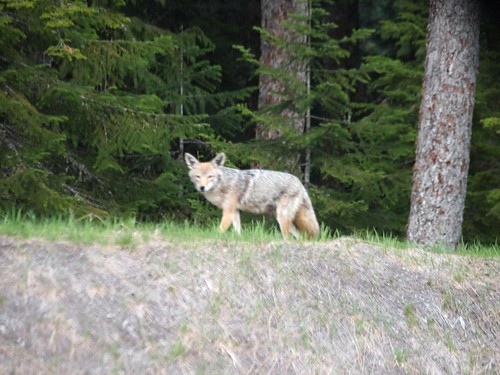
This rare shot of a coyote was possible only when our cameras were ready and fully trained on it
Special mention must be made of James Fougere of Whistler Discover Tours, who taught me many of these things during a bear viewing expedition. We’ve got many wonderful photos, videos and memories from that trip. 🙂

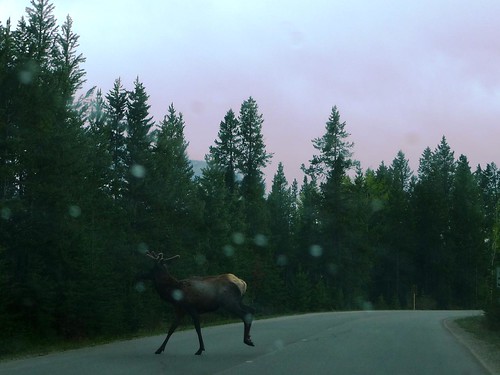
it’s just amazing to see so many (BIG) wild animals at such close range!